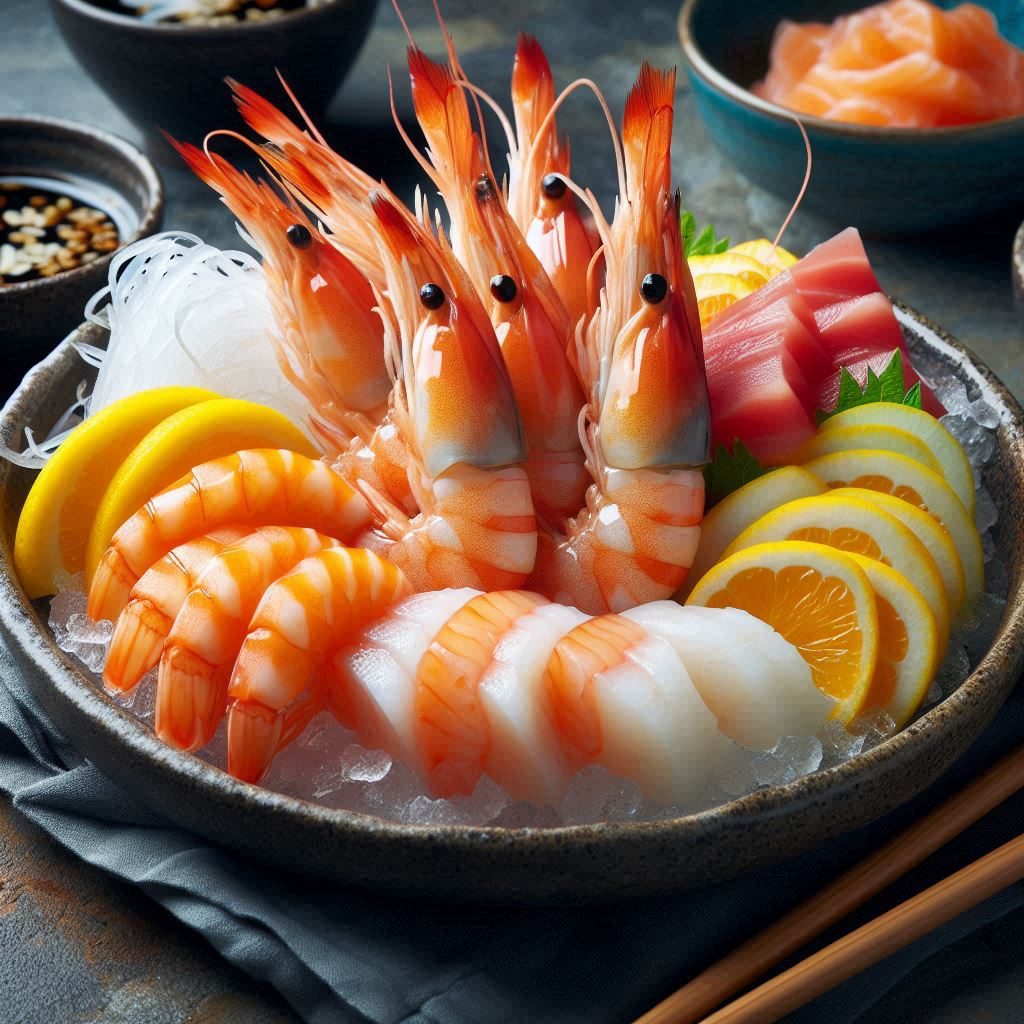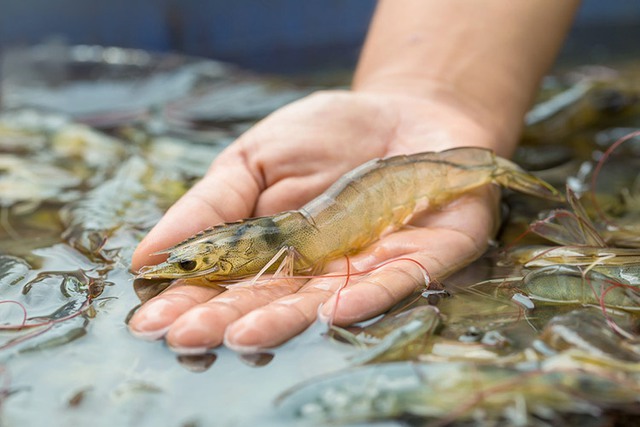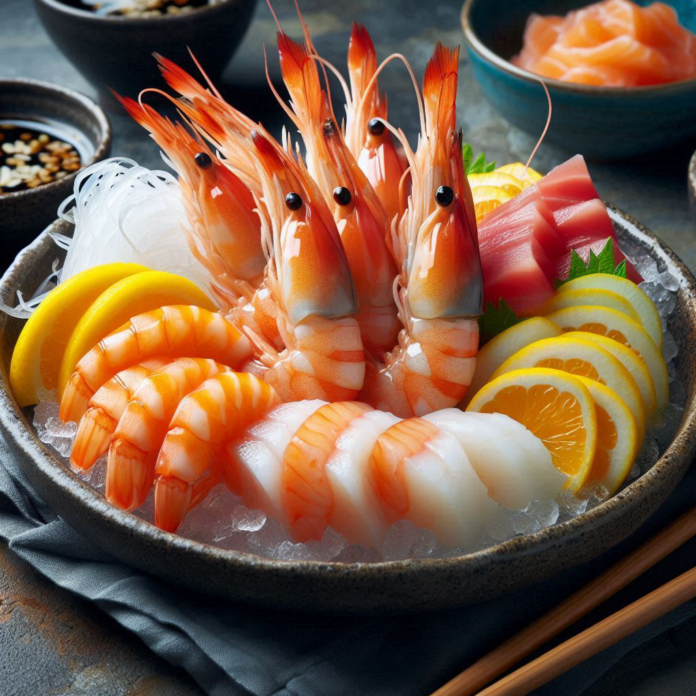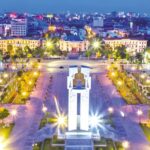The billion-dollar species in question is shrimp.
According to the latest report from the Ministry of Agriculture and Environment, Vietnam’s agricultural sector has recorded notable achievements in the first four months of 2025, with export turnover of agricultural, forestry, and aquatic products reaching $21.15 billion, a 10.7% increase compared to the same period last year.
Vietnam’s seafood export turnover reached $3.09 billion, a 17% increase compared to the same period in 2024. Among the export items, shrimp stood out with a significant increase – shrimp exports reached $1.24 billion, a 28.4% surge.

Illustrative image generated by AI.
Doing some quick math: The total shrimp export turnover in the first four months of 2025 (a total of 120 days) = $1.24 billion.
This equates to approximately $10.33 million per day (roughly VND 258.25 billion, based on an estimated exchange rate of 1 USD ≈ 25,000 VND).
Shrimp is one of Vietnam’s key export items, particularly the black tiger shrimp and white-legged shrimp species. Vietnam is among the world’s largest shrimp exporters, with the US, EU, Japan, and China as its primary markets.
In April 2025, prices of black tiger shrimp and white-legged shrimp in major markets such as China (9.6 USD/kg and 6.6 USD/kg) and the US (17.7 USD/kg and 10.9 USD/kg) remained stable, providing a positive impetus for exports.
The Shrimp Industry’s Role in Vietnam’s Sustainable Development
The shrimp industry has long established its position as one of Vietnam’s crucial economic pillars, not only in terms of exports but also in promoting sustainable development.
Beyond its export value, the shrimp industry provides millions of jobs, especially in the Mekong Delta region – considered the country’s “shrimp capital.” From farming and processing to logistics, the industry offers stable livelihoods for workers, contributing to poverty alleviation and local economic growth. Provinces like Ca Mau, Bac Lieu, and Soc Trang have become major shrimp production hubs, driving development in the region.

White-legged shrimp is one of the favored exported shrimp types.
As the world increasingly prioritizes sustainable development, Vietnam’s shrimp industry is undergoing a transformation to meet international standards and contribute to a greener and more sustainable future.
The quality of Vietnamese shrimp is highly regarded due to its compliance with stringent standards such as ASC (Aquaculture Stewardship Council), BAP (Best Aquaculture Practices), and GlobalGAP, reinforcing its position in the international market.
To meet these stringent international standards, shrimp farmers need to invest in and adopt advanced technology. Super-intensive farming systems, water recirculation, and the use of microorganisms have increased productivity, reduced antibiotic and chemical usage, and minimized negative environmental impacts.
Despite its achievements, the Vietnamese shrimp industry still faces challenges. Climate change, saltwater intrusion, and shrimp diseases like white spot syndrome and EMS (Early Mortality Syndrome) pose significant threats to productivity.
Additionally, the international market’s increasingly stringent requirements for traceability, environmental protection, and labor standards compel the industry to continuously innovate. Competitive pricing from countries like India and Ecuador is another issue to address.
Therefore, for sustainable development, Vietnam should focus on several strategic orientations:
Firstly, invest in research and production of high-quality, disease-resistant shrimp breeds.
Secondly, develop a closed-loop value chain, from farming to processing, to optimize profits and ensure product quality.
Thirdly, strengthen international cooperation and promote the Vietnamese shrimp brand to expand markets.
Lastly, enhance supportive policies such as capital provision, training, and technology transfer to empower farmers and businesses.
With export turnover in the billions of dollars annually and the ability to provide livelihoods for millions of workers, shrimp contributes not only economic benefits but also positively impacts environmental protection and community development.
“Transforming Tu Son into a Heritage City: A Fusion of Tradition and Modernity”
If the melody of the music video Bắc Bling struck a chord with you, then delve deeper into this vibrant young city – a unique blend of modern and traditional, steeped in rich cultural heritage and brimming with potential. Known as the “Village in the City, City in the Village”, it boasts a distinct charm and a promising future.
The Fresh Vietnamese Milk Producer’s Pledge: Carbon Neutrality and Net Zero
At a recent Carbon Neutrality Certification Ceremony, representatives from the TH Group (owners of the national brand TH true MILK) announced their commitment to maintaining carbon neutrality at two of their member units – TH Milk Joint Stock Company and Nui Tien Pure Water Limited Company. The companies will uphold this status according to the PAS 2060: 2014 standard until 2028, after which they aim to achieve neutrality in accordance with ISO 14068.
The Future of Banking: Techcombank Unveils Its New Branch in Vung Tau
On April 3rd, Vietnam Technological and Commercial Joint Stock Bank officially inaugurated its next-generation branch model in Vung Tau, featuring a unified, distinct, and superior design and identity. This strategic milestone marks the beginning of the recently announced plan to comprehensively renovate the branch network, aiming to pioneer and set a new standard for bank branch models in Vietnam, embracing digitalization, modernity, and a green and sustainable future.





















